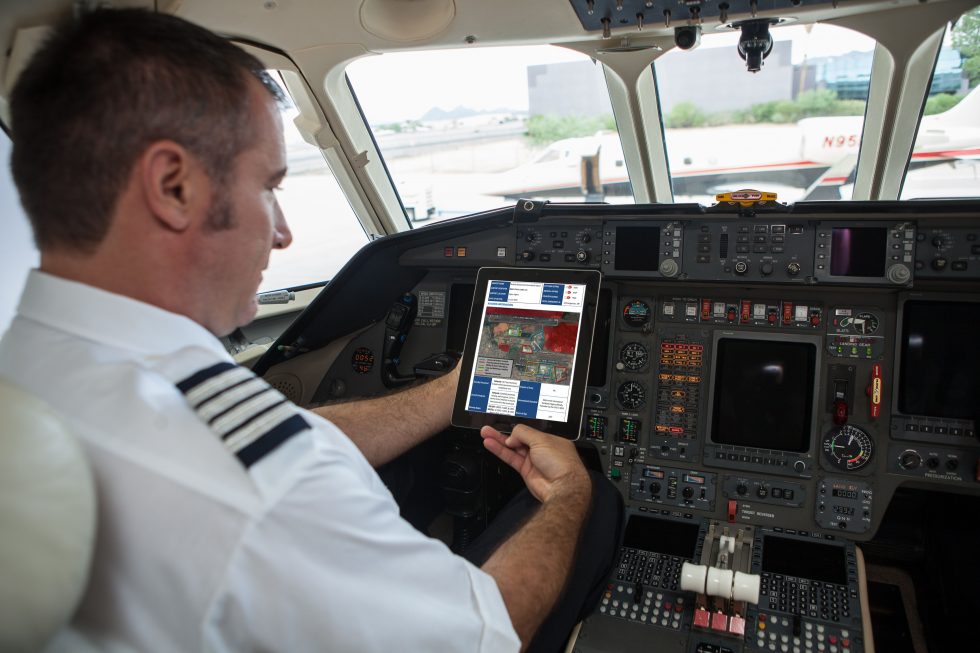Members Update: MedAire- The Events that Shook the Aviation Industry in 2020 – and it’s only March
What happened, what we’ve learned, and how to move forward. The downing of Ukrainian Airlines flight and the Covid-19 outbreak started the aviation industry on edge as the new decade began. John Cauthen, MedAire Security Director and member of the NBAA Security Committee, talks about the gaps they see with operator preparedness – and best practices to mitigate exposure to risks during the next crisis – whatever that may be.

1. With the new decade came a series of events that have shaken the aviation sector, what are some of the gaps in operator preparedness?
For aviation operators, routes will often take their people and assets over volatile locations embroiled in conflict driven by complex geopolitical events. We witnessed this just after the start of the New Year with the escalation in Middle East violence, principally ongoing civil unrest in Iraq and the contest for influence between the U.S. and Iran.
This manifested rapidly during the U.S. strike on Iranian Major General Soleimani in Baghdad followed by the reprisals from Iran during a ballistic missile attack on a U.S. base in Iraq. The Iranian shoot-down of Ukrainian International Airlines Flight 752 departing Tehran was likely associated with this escalation in hostilities and reinforced the significant overflight risks in the region, especially during heightened military action, direct or indirect, between regional and international actors.
Access to sound risk management information and assessments remain critical to operators, especially when transiting into, over, or adjacent conflict zone airspace. Much like building proper situational awareness for operations and safety related matters, operators need to ensure they have access to the latest information, assessments, and advice to help manage risk and enable business operations with optimal mitigation measures in effect. These geopolitical tensions will persist and will continue to flare up from time-to-time, but have recently been supplanted as a major concern by Covid-19, notably after the WHO declared the growing outbreak a pandemic.
The most significant gaps we are seeing at present, then, are business continuity planning (BCP) and organizational resiliency. While these certainly apply to an organization’s security requirements, they become much more important during a medical crisis, especially one of the current magnitude. Under normal circumstances, BCP is difficult to develop and implement – and achieving broad cultural acceptance can be challenging under even the most benign of circumstances.
But in the midst of a crisis of the current scale and scope, organizations must implement BCP and resiliency measures as part of their overall response protocol. These measures, even if not perfectly suited to the challenge at hand, are a necessity to assuage client and employee concerns and signal to various internal and external stakeholders that all appropriate measures are being exercised to directly confront the challenge and minimize repercussions to the business, employees, vendors, and clients.

2. There is an evolving and unpredictable climate of crisis in 2020, how can we mitigate exposure to risks, whatever they may be?
Fundamentally, this is about having access to sound information and well-exercised plans with broad support across the organization. As noted above, preparing robust business continuity plans (BCP) to facilitate organizational resiliency is critical prior to the onset of any crisis. Once a crisis begins, leadership and communication are critical to the response.
Organizational leadership from the top down and bottom up will be necessary to respond and then ultimately recover from the crisis. These are the individuals who set the tone and their actions should be a coordinated effort linked to a BCP. Where one does not exist or is deficient, leadership and communications still matter and in ad hoc fashion, a crisis team can be organized and led by an executive sponsor. This will be difficult but necessary depending on the crisis and overall magnitude. Plan, but always remain flexible and ensure your plans allow for adaptation.
These crisis teams will also act as the hub for collecting and analyzing information, developing recommendations, and disseminating communications. As we are learning with Covid-19, the rapidity of its spread, the multitudes of unknowns, and the complexity of local, regional, and global restrictions and prohibitions make for a continuously evolving, fluid, and dynamic environment in which changes occur almost before one can respond. Therefore, having trusted partners to support organizational crisis teams
with information flow and management, developing timely and relevant assessments, and providing critical advice in times of duress remain a crucial component of any organization’s arsenal of crisis response measures. Mitigation follows understanding, and once you have developed situational awareness appropriate for the circumstances you can then act with focus and purpose.

3. Could you share some trusted resources to stay abreast of aviation security risks?
Aviation security is a multi-spectrum endeavor and there are some useful governmental sites organizations can access, for example: the U.S. Federal Aviation Administration (FAA): https://www.faa.gov/air_traffic/publications/us_restrictions/ and European Union Aviation Safety Agency’s (EASA) site for conflict zones: https://www.easa.europa.eu/easa-and-you/air-operations/information-on-conflict-zones
The International Civil Aviation Organisation (ICAO) also has a number of assistance and training programs available for broad aspects of aviation security from facilitation to program development: https://www.icao.int/Security/isd/Pages/default.aspx.
Although a commercial aviation-specific trade organization, the International Air Transport Association (IATA) has useful information as well: https://www.iata.org/en/programs/security/. An excellent resource for business and general aviation operators is the National Business Aviation Association’s (NBAA) Security Council: https://nbaa.org/aircraft-operations/security/, especially the Security Risk Assessment document, which may prove quite useful.
Finally, MedAire recommends working with a trusted provider who monitors global aviation security threats and produces a variety of risk assessment products for clients, enabling their business operations across the globe, even to some of the least permissive locations in the world.
4. What about the mental health impact of social distancing, is this something employers can help with?
As the COVID-19 pandemic continues to have an impact on the operators and businesses globally, there is a growing concern around the potential effects it may have on mental wellbeing. As the working environment changes and self-isolation is occurring more often, it is important that organisations provide their workforce with timely, accurate and verified information to avoid their people feeling isolated and vulnerable. MedAire provides emotional support services for just these reasons in addition to the medical and travel safety services we provide.
In addition, employers are encouraged to provide counseling services through their employee assistance programs.

5. Going forward, what lessons can be learned and how can crew and personnel be best supported?
Preparation and planning are the best takeaways from what we’ve seen thus far in 2020. As we know in aviation, training and preparation are the baseline to safe and secure operations. Professional crews do this through the rigorous initial – and then continued – education and training, often by accessing and using simulators to practice emergency procedures, so they will be prepared to act effectively in times of crisis.
In many ways, an engine fire or hydraulic malfunction inflight is an appropriate corollary to organizational preparedness and resiliency. Developing the appropriate plans, instilling a culture of resiliency in times of crisis, and exercising these plans – at least on an annual basis – will help personnel and operators respond appropriately during a crisis, whether it is a natural disaster, pandemic, or large-scale armed conflict.
Finally, having access to curated and pertinent information is critical in this age of data overload. Ensuring the organization has a relationship with a trusted provider who can help filter out relevant information and develop timely and accurate risk assessments will help organizations prepare and become resilient when and if a crisis occurs.
For more information, please visit www.medaire.com and www.medaire.com/coronavirus.
